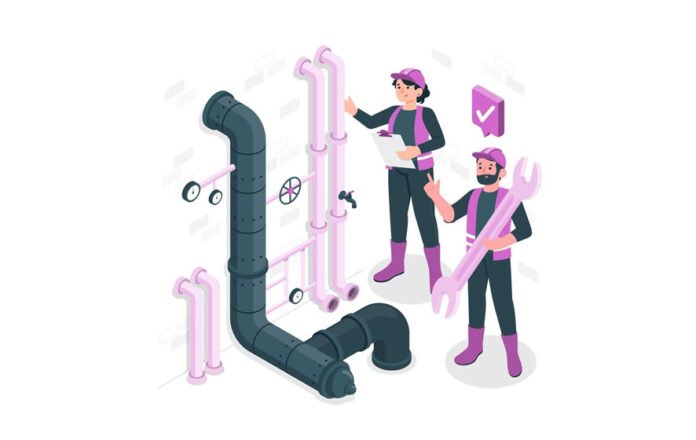Key Takeaways:
- Smoke testing is a non-invasive and effective method for identifying leaks, blockages, and other issues in pipelines.
- The process involves pumping artificial smoke through pipelines to detect faults visually.
- Environmental and safety aspects are important considerations, with non-toxic smoke and rigorous safety protocols in place.
- Compliance with local and federal regulations is essential.
- A step-by-step guide to conducting effective smoke tests includes pre-testing preparations, setup, execution, documentation, analysis, and reporting.
- Specialized tools and techniques are used, and common challenges are addressed with solutions like selecting ideal weather conditions and utilizing supplementary tools.
- The future of smoke testing holds promise with innovations in smoke composition, delivery, and detection mechanisms.
The Basics of Smoke Testing for Pipeline Integrity
Ensuring the integrity of pipelines is a critical aspect of urban infrastructure management. One effective strategy gaining traction is smoke testing, a proactive maintenance measure that identifies many issues from leaks to blockages. At its core, smoke testing involves pumping artificially generated smoke through pipelines to detect faults visually.
As a standout in non-invasive diagnostics, a sewer smoke test reveals the hidden problems without excavating the streets or disrupting a community’s daily life. Industry practitioners value this method for its simplicity and efficacy. By observing the smoke as it escapes from the pipeline, they are empowered to decisively locate leaks and illegal connections and assess the sewer system’s overall condition.
Environmental and Safety Aspects of Pipeline Smoke Testing
When considering the broader implications of smoke testing, it’s paramount to acknowledge the environmental and safety dimensions. The artificial smoke deployed in this process is carefully formulated to be non-toxic and environmentally benign, ensuring that neither the natural habitat nor the public’s health is compromised. Safety protocols are also a fundamental part of conducting a sewer smoke test, with rigorous standards in place that technicians must adhere to. By contemplating these aspects, smoke testing becomes a powerful ally to the environment, as it allows for the early detection and prevention of potential contaminations that could result from pipeline issues.
Compliance With Regulations
Its effectiveness notwithstanding, smoke testing must be performed within the bounds of local and federal guidelines designed to protect the environment and the populace. These regulations ensure that the process is executed with utmost responsibility and directed towards maintaining public well-being and ecological balance. It complies with these regulations that entities can progress with testing, ultimately making poignant contributions to urban health and safety.
Step-By-Step Guide to Conducting Effective Smoke Tests
Executing a productive smoke test involves carefully orchestrated steps that preclude meticulous planning and culminate in thorough analysis and interpretation of the results.
- Pre-Testing Preparations: The groundwork for smoke testing is laid out well before the test begins. Permissions must be secured, and residents potentially affected by the test are pre-emptively notified to avoid unnecessary alarm.
- Setup: With legal and communal prerequisites satisfied, setting up the equipment is the next step. Technicians prepare smoke blowers and ensure that all safety measures are in place, emphasizing minimizing any inconveniences or hazards.
- Execution: The core of the process, introducing smoke into the pipeline, is performed with acute precision. Technicians remain vigilant as the smoke travels through the sewer, marking areas where smoke emerges, and indicating possible leaks or breaks.
- Documentation: To provide an accurate account of the smoke test, all observations are meticulously documented. Photography may capture smoke emissions, and annotations are added to sewer maps to reflect the test findings accurately.
- Analysis and Reporting: Once the fieldwork is completed, the data collected is analyzed to understand the sewer system’s condition. Compiling a detailed report on these findings is essential for planning subsequent maintenance and repair work.
Tools and Techniques: What You Need For Smoke Testing
The tools of the trade for smoke testing are specialized and varied, designed to cover the spectrum of different pipeline systems and municipal environments. From portable smoke generators suitable for narrow alleys to robust, high-capacity units for sprawling sewer networks, the technology used is important to the test’s success. Technicians select their tools based on the scope of work and the site’s physical constraints to ensure the process is thorough and efficient.
Common Challenges and Solutions in Smoke Testing
Numerous challenges stand in the way of a smooth smoke test. Environmental variables like wind can scatter smoke, while precipitation can create additional obstacles. Professionals have developed various solutions to such predicaments, such as selecting the ideal meteorological conditions for testing and utilizing supplementary tools like specialized cameras that can help visualize smoke even in less-than-optimal circumstances.
The Future of Smoke Testing in Pipeline Maintenance
Like all technological disciplines, the domain of smoke testing is evolving rapidly. Innovations in smoke composition and delivery are anticipated, alongside advancements in detection mechanisms, which promise to streamline this already effective maintenance procedure further. The non-invasive and eco-friendly nature of smoke testing secures its place within the futurescape of infrastructure management, ensuring pipelines continue to serve their vital role with minimized risks and heightened reliability.
Conclusion
Smoke testing is a vital tool in pipeline maintenance, offering a proactive and non-invasive approach to identifying issues before they become major problems. By understanding the basics of smoke testing, its environmental and safety aspects, and the step-by-step process, technicians can effectively detect leaks, blockages, and other faults. With the right tools and techniques, challenges can be overcome, and the future of smoke testing holds promise with innovations on the horizon.
As urban infrastructure management continues to evolve, smoke testing remains a important ally in ensuring the integrity and reliability of pipelines, ultimately contributing to public health, safety, and environmental well-being.
